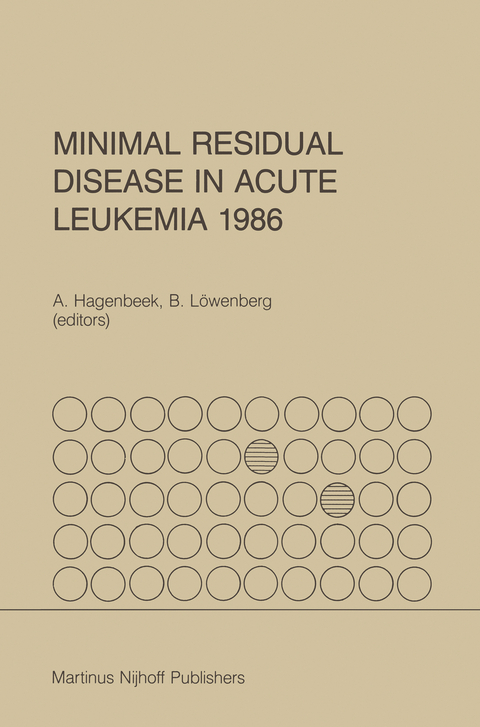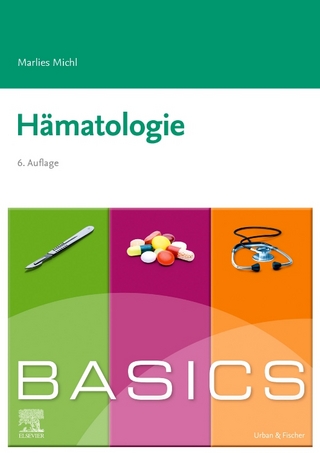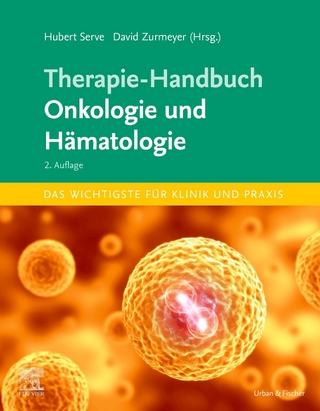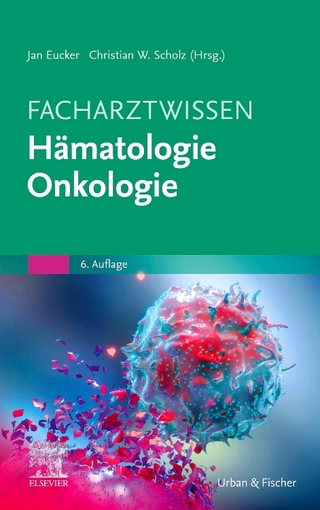
Minimal Residual Disease in Acute Leukemia 1986
Springer (Verlag)
978-94-010-8398-0 (ISBN)
I — Detection of Minimal Residual Disease in Acute Leukemia.- New possibilities for cytogenetic analysis of leukemic cells.- Breakpoint analysis in CML: potentials for detection of minimal residual disease.- The mammalian ETS genes: two unique chromosomal locations in cat, mice and man and novel translocated position in human leukemias.- Activated RAS oncogenes in acute leukemia.- DNA rearrangements as unique markers of clonal evolution, recurrence and translocation.- The application of monoclonal antibodies for the detection and classification of AML.- Towards detection of minimal disease: discrimination of AML precursors from normal myeloid precursors using a combination of surface makers.- An immunological approach to analyse the kinetics of minimal residual disease in acute leukemia.- Visualization of minor cell populations with simultaneous three-parameter flow cytometry: BN rat marrow and spleen model.- Growth kinetics of minimal residual disease in the brown Norway rat acute myelocytic leukemia.- Detection of minimal residual acute lymphoblastic leukemia by immunological marker analysis: possibilities and limitations.- Surveillance of terminal deoxynucleotidyl transferase-positive cells in peripheral blood of patients with acute lymphoblastic leukemia.- In vitro colony forming cells of acute lymphoblastic leukemia: analysis of 24 cases with recombinant interleukin 2 as growth stimulus.- II — Intensive Chemotherapy Regimens for ‘Minimal Residual Disease’ in Acute Myeloblastic and Lymphoblastic Leukemia.- Biologic and treatment determinants of curability in acute myologenous leukemia.- High-dose cytosine-arabinoside plus AMSA for reinduction or consolidation-maintenance in acute myelogenous leukemia.- Treatment of residual disease in AML: interim analysisof a southeastern cancer study group prospective randomized clinical trial.- L-20 protocol for adult patients with acute lymphoblastic leukemia: a protocol utilizing prognostic factors, intensive chemotherapy and autologus “purged” marrow transplantation to eradicate minimal residual disease.- Treatment of minimal residual disease in adult ALL: the German national study.- Treatment of minimal residual disease in “poor risk” acute lymphoblastic leukaemia with high-dose cytosine arabinoside.- III Autologous Bone Marrow Transplantation for the Eradication of ‘Minimal Residual Leukemia’.- Autologous bone marrow transplantation in first remission AML using non-purged marrow — update.- Double autografting: a potential curative regimen for acute leukaemia?.- Autologous bone marrow transplantation in acute nonlymphocytic leukemia. A study of ex vivo marrow treatment with 4-hydroperoxycyclophosphamide.- Attempts to eliminate residual acute myeloid leukemia from autologous bone marrow grafts through in vitro chemotherapy — a review.- Monoclonal antibody purged autologous bone marrow transplantation for relapsed non T-cell acute lymphoblastic leukemia.- Allogeneic and autologous marrow transplantation: ex vivo purging with monoclonal antibody or immunotoxins to remove leukemic cells or to prevent graft versus host disease.- Detection and selective destruction of tumor cells by the lipophilic dye, merocyanine 540.- IV Allogeneic Bone Marrow Transplantation for the Eradication of ‘Minimal Residual Leukemia’.- Factors influencing long-term leukemia-free survival after allogeneic bone marrow transplantation for acute leukemia.- Bone marrow transplantation with HLA identical donors in the acute leukemias — Baltimore experience.- Results of allogeneic marrowtransplantaton in patients transplanted for acute leukemia: a long-term follow-up.- Bone marrow transplantation in first CR of acute leukaemia using T-depleted marrow from HLA identical sibling donors.- Soybean lectin agglutination and E-rosette depletion for removal of T-cells from HLA-identical marrow grafts: results in 60 consecutive patients transplanted for hematologic malignancy.- Allogeneic bone marrow transplantation in adult leukemia: result of T-cell depletion by soybean lectin fractionation.- Rapid lymphocyte depletion by a new elutriator rotor for the prevention of acute graft versus host disease after allogeneic bone marrow transplantation.- Problems and prospect of histoincompatible bone marrow transplantation studied in rhesus monkeys.- Allogeneic marrow transplantation for the treatment of leukemia. Role of the major histocompatibility complex.- Summing up.- Minimal residual disease in leukemia: 1986.- Index of subjects.
| Reihe/Serie | Developments in Oncology ; 45 |
|---|---|
| Zusatzinfo | XIV, 393 p. |
| Verlagsort | Dordrecht |
| Sprache | englisch |
| Maße | 155 x 235 mm |
| Themenwelt | Medizinische Fachgebiete ► Innere Medizin ► Hämatologie |
| Medizin / Pharmazie ► Medizinische Fachgebiete ► Onkologie | |
| ISBN-10 | 94-010-8398-3 / 9401083983 |
| ISBN-13 | 978-94-010-8398-0 / 9789401083980 |
| Zustand | Neuware |
| Informationen gemäß Produktsicherheitsverordnung (GPSR) | |
| Haben Sie eine Frage zum Produkt? |
aus dem Bereich


